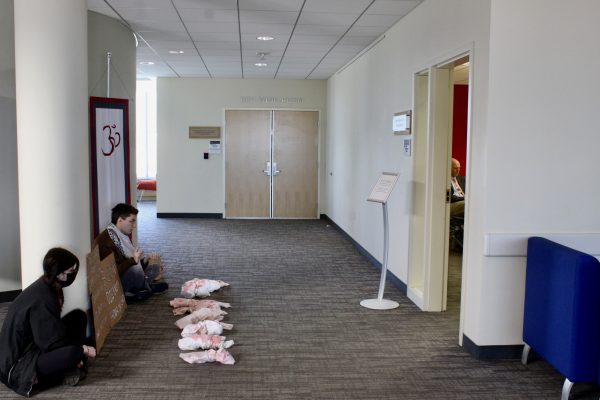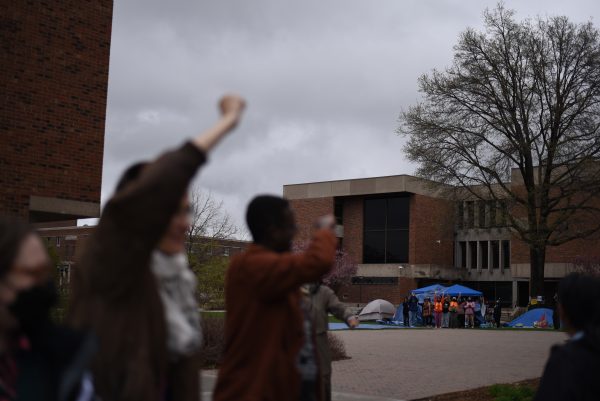Not so white white-boards
Markers make boards more Difficult to read.
March 10, 2016
An ironic juxtaposition was on the upper right hand corner of classroom GLC 223W’s whiteboard. Above, a request to avoid using Staples brand markers for writing. Below, a notification written in telltale black ink. The request, Professor Gretchen Rueth explained, is due to the tendency of these particular markers to leave behind black smudges and stains.
Rueth has chosen to bring her own markers to her classes. She cited several reasons for this, both in terms of functionality and personal preference. “They’ll never have multi-colored markers,” she said, for example. Rueth thought that it was helpful to have different-colored markers for lectures to distinguish different things in her whiteboard notes.
“Everything else is fairly functional,” Rueth said with regards to the rest of the classroom space. Her only other potential complaint was that the technology can be difficult to work for newcomers, but she used the whiteboard more anyway. She said that she hadn’t actually seen markers missing, but rather markers that had run out of ink or markers that made permanent smudges on the whiteboards.
Rueth says that it’s probably more likely for markers to go missing in the summer, when classrooms are more lax. She’s not as concerned with that. It’s the markers that leave the board messy that are the most stressful.
Tianna Odegard, a senior, agreed, saying that “the white board already has all kinds of stains from all of the previous writings, so trying to read a professor’s handwriting with a cruddy old marker that doesn’t really work on top of [that] is nearly impossible.” She didn’t mention the particular brand, saying that the only markers she had dealt with were the “Expo dry erase” kind.
Odegard has been doing work study for the Anthropology department, and decided one day to take advantage of the fact that her current classes were all part of the Anthropology major. She decided to take six markers from the lab in which she worked. These she put in a bag labeled “Anthropology Markers” and brought them with her to each class. “The professors are usually surprised when a student offers a marker,” she said, “but always thankful.”
Odegard doesn’t have a particular attachment to whiteboards or markers, saying that “the whiteboards always stain no matter what, which is why I appreciate those professors that just use PowerPoint.”
However, for those professors who did prefer writing their lectures out, she said that “having a working markers in class is always 50/50 this particular semester.” She expressed relief that she would be leaving Hamline soon, but thought that “other students should definitely bring that up and resolve this for the long term.”
Neither Rueth nor Odegard have made requests for more markers. Facilities Services, located at 1481 Taylor Avenue, recommended contacting Ryan Hoster at rhoster01@hamline.edu or 651-523-2038 for requests. Hoster himself offered to give more information, but did not respond to further questions.
There is more information about Facilities on the Hamline website under the Facilities Services page. The page includes a place to make a service request, but classroom supplies are not listed.





